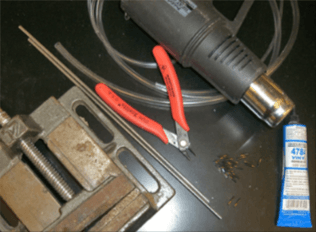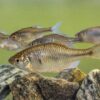RFID technology is increasingly pivotal in wildlife studies and conservation assessments, allowing researchers to track animal movements, monitor populations, and gather critical ecological data. However, the cost of commercial RFID antennas can be prohibitive. Building your own RFID antenna provides a cost-effective, customized solution that enhances your research capabilities while fostering a deeper understanding of RFID technology applications in the field. Here’s how you can embark on this rewarding DIY project with our support.
Why Build Your Own RFID Antenna?
Creating your own RFID antenna is not only economically wise but also provides tailored solutions for specific research needs. The benefits include:
- Cost Efficiency: Building your own antenna can save thousands compared to commercial options.
- Customization: Design an antenna that fits the unique requirements of your wildlife study or conservation project.
- Educational Value: Gain hands-on experience with RFID technology, enhancing your technical skills and understanding of field applications.
Getting Started: What You’ll Need
We support your project with comprehensive resources, including expert advice, personalized shopping lists, and community connections. Here’s how to get started:
Step 1: Personalized Shopping List
We recognize the specificity needed in RFID antenna materials for wildlife research. After assessing your project details, we provide a customized shopping list tailored to your needs, ensuring you purchase only what’s necessary for your particular application.
Step 2: Connect with Experts
Our community forum is a resource for connecting with other DIY builders and industry experts experienced in RFID antenna construction, particularly in wildlife and conservation contexts. Exchange ideas, resolve queries, and receive guidance through every phase of your antenna building process.
Step 3: Plan Your Antenna Design
Choose the right type of RFID antenna for your wildlife study. Consider factors such as the species you are tracking, their habitat, and the environmental conditions. Common designs in wildlife research include loop antennas for small animal tracking and directional antennas for tracking larger ranges. Your design should meet specific operational frequencies and performance standards crucial for accurate data collection.
Step 4: Assemble and Test
Follow our guides to assemble your RFID antenna. Testing its performance is crucial to ensure it is correctly tuned to the frequencies used in your study. This step is vital for gathering reliable data and ensuring the safety and effectiveness of your research tools.
Step 5: Installation
Install your antenna in an appropriate location within the study area. Factors to consider include the animal’s movement patterns, potential interference from natural elements, and ensuring minimal disturbance to the wildlife. Proper installation is key to maximizing data accuracy and antenna functionality.
Ongoing Support and Resources
We are dedicated to supporting your project from inception to completion. Our comprehensive resources include:
- Step-by-step building guides and tutorials.
- Expert forums for advice and support.
- Customer service for troubleshooting and questions.
Conclusion
Building your own RFID antenna is an invaluable endeavor for wildlife researchers and conservationists looking to reduce costs and tailor technology directly to their project’s needs. This DIY approach not only saves money but also enhances the quality and specificity of ecological data collection.
Embrace the challenge and start your DIY RFID antenna project today. With our support, you are well on your way to contributing significantly to wildlife studies and conservation efforts. Happy building!










Add comment